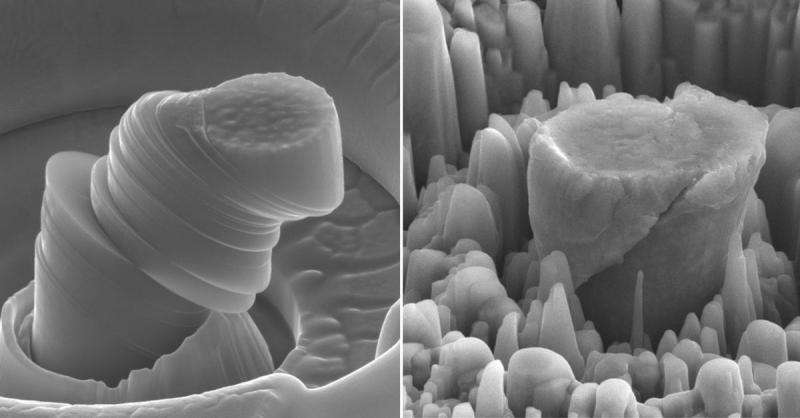Is this the material UFO’s are made of? Researchers create the strongest and lightest metal ever

The revolutionary material can be used to create new revolutionary cars, airplanes, trains, and spaceships to electronics and biomedical devices. It is the material from the future, a material that could catapult us onto the next level.
The material was ‘invented’ by a team of researchers from the Henry Samueli School of Engineering at the University of Applied Sciences in Los Angeles (UCLA. The innovative material which has an exceptional strength and is extremely lightweight is made of 86% of magnesium, and 14% of silicon carbide particles according to the study published in the journal Nature. To create the so-called ‘nanocomposite metal’, the team developed a new method to disperse and stabilize nanoparticles in molten metals. The low density and high strength of magnesium showed record levels of specific resistance (amount of weight that resists material before breaking) and specific module (ratio between rigidity and weight) in both low and high temperatures.
“It’s been proposed that nanoparticles could really enhance the strength of metals without damaging their plasticity, especially light metals like magnesium, but no groups have been able to disperse ceramic nanoparticles in molten metals until now,” said Xiaochun Li, the principal investigator on the research and Raytheon Chair in Manufacturing Engineering at UCLA. “With an infusion of physics and materials processing, our method paves a new way to enhance the performance of many different kinds of metals by evenly infusing dense nanoparticles to enhance the performance of metals to meet energy and sustainability challenges in today’s society.”
This new procedure opens the door for improving existing materials used in the aviation, space and automotive industries, among others, by including nanoparticles that improve their performance in extreme conditions to meet energy and sustainability challenges in today’s society. Taking into account that magnesium is an abundant resource, its eventual use would not cause much environmental damage.
Experts view ceramic particles for a long time as a revolutionary way to make metals stronger, however with micro scale ceramic particles, the infusion process results in loss of plasticity. Nanoscale particles are proven to enhance the strength of a material while maintaining or improving metals’ plasticity. Researchers, however, state that nanoscale ceramic particles have the tendency to clump together rather than dispersing evenly, this is because small particles tend to attract one another. This is why researchers dispersed the particles into a molten magnesium-zinc alloy, in order to counteract the issue. The newly discovered nanoparticle dispersion is based on the kinetic energy in the particles’ movement say, researchers, something that stabilizes the particles’ dispersion and prevents nano scale ceramic particles clumping up together.
“The results we obtained so far are just scratching the surface of the hidden treasure for a new class of metals with revolutionary properties and functionalities,” Li said.
The new material called a metal nanocomposite can prove to be a revolutionary material that could possibly change specific segments in our society, with transportation and space exploration possibly being it’s number one clients.



 Creators of mankind
Creators of mankind Description of “Tall white aliens”
Description of “Tall white aliens” Where they came from?
Where they came from? About hostile civilizations
About hostile civilizations The war for the Earth
The war for the Earth “Tall white aliens” about eternal life
“Tall white aliens” about eternal life Video: “Nordic aliens”
Video: “Nordic aliens” Aliens
Aliens Alien encounters
Alien encounters The aliens base
The aliens base UFO
UFO Technology UFO
Technology UFO Underground civilization
Underground civilization Ancient alien artifacts
Ancient alien artifacts Military and UFO
Military and UFO Mysteries and hypotheses
Mysteries and hypotheses Scientific facts
Scientific facts


















